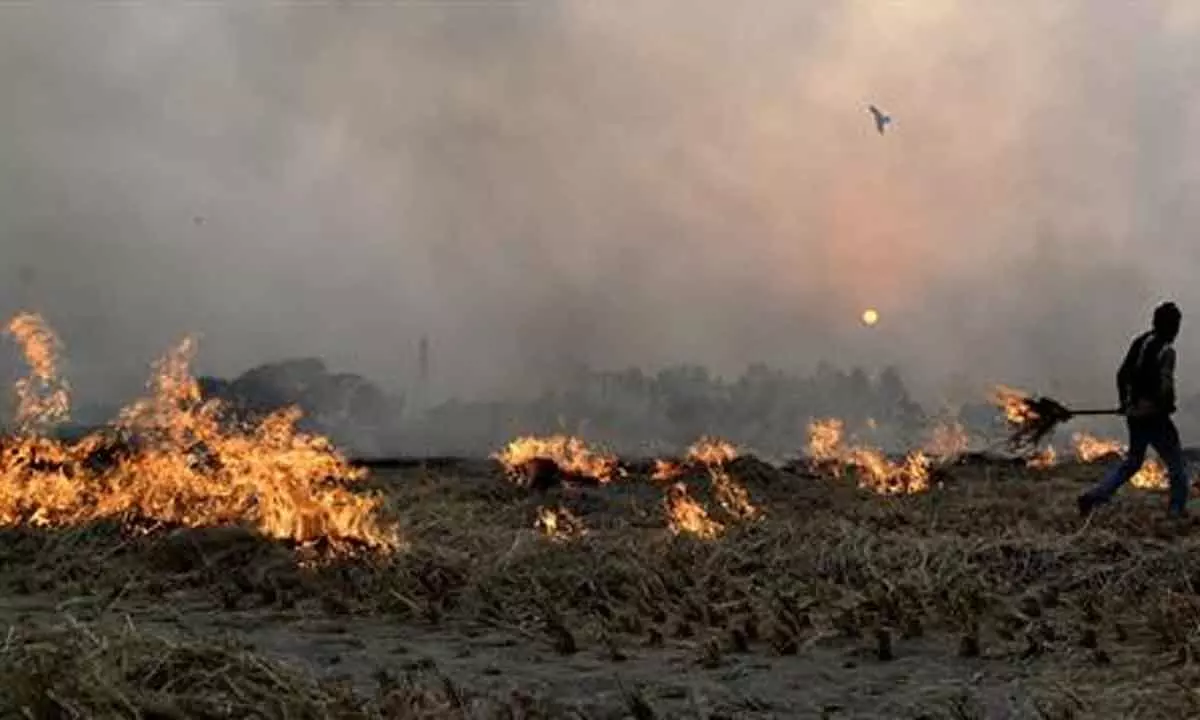A practical approach needed to stamp out crop burning menace
image for illustrative purpose

Stubble burning, the practice of burning crop residue to prepare fields for sowing, has already begun in Punjab. Of course, apart from farmers, the entire north Indian population will suffer the consequences of pollution. Unfortunately, the Central and state governments are still struggling to root out the problem. Last year, the prestigious science magazine ‘Nature’ found that from 2003 to 2019, “agricultural residue burning caused 44,000–98,000 particulate matter exposure-related premature deaths annually, of which Punjab, Haryana and Uttar Pradesh contributed 67–90%.” The Air Quality Life Index (AQLI) report for 2023 by the University of Chicago’s Energy Policy Institute recently found that air pollution cuts short the lives of Delhi citizens by about 11.9 years. The problem is a grievous one not only because of its impact on the environment and human health but also its financial cost. In 2019, researchers from the US-based International Food Policy Research Institute (IFPRI) and partner institutes estimated the economic cost of exposure to air pollution from crop residue burning at $30 billion annually for Punjab, Haryana and Delhi.
The Central government claimed in December 2021 that it was rigorously and comprehensively taking up the issue of pollution caused by stubble burning in Delhi-NCR. The Commission on Air Quality Management in NCR and Adjoining Areas (CAQM) developed a framework and action plan. It included in-situ crop residue management (CRM) with CRM machine procurement, setting up of customised hiring centres, high-yield and short-duration paddy varieties, staggering of harvesting schedule and extensive use of bio-decomposers. Then there was also ex-situ CRM, involving the alternative usage of paddy straw—namely, biomass power projects, co-firing in thermal power plants, feedstock for 2G ethanol plants, feed stock in compressed biogas plants, fuel in industrial boilers, waste-to-energy plants and packaging materials. There was also talk of prohibition of crop residue burning and effective enforcement. Last year, the government claimed that there was a 31.5 per cent decline in “crop residue burning events” between September 15 and November 30 in Punjab, Haryana, Delhi and the NCR districts of UP. That may be true but there is little evidence to suggest any significant improvement in air quality in north India during this period.
Moreover, there have been state-wise variations. Haryana, for instance, has done a better job by executing a comprehensive plan. Using the carrot-and-stick policy, it has mapped out villages with widespread farm fires, set up control rooms, and gathered enforcement teams. At the same time, it came up with incentives to motivate the farmers to give up this ugly and unhealthy practice. Punjab, on the other hand, has not been able to curtail the menace. At the heart of the failure on the part of the authorities at various levels lies their predilection to stick to the discredited, statist solutions like subsidies and minimum support prices (MSPs). This is despite the fact that statist measures and dangerously populist schemes like free electricity are the root-cause of stubble burning. These measures have resulted in ecologically dangerous and unnatural cropping patterns of wheat and paddy in Punjab, Haryana, and western UP. It is time the powers that be evolve out-of-the-box thinking to stem the rot.

